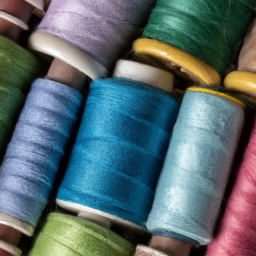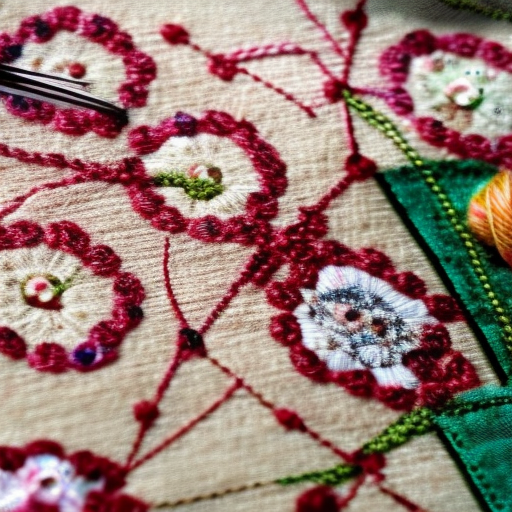
Sewing is an essential craft that has been a part of human civilization for thousands of years. It allows us
to create, mend, and customize clothing and other textiles. However, have you ever wondered who invented the
thread for sewing? Let’s dive into the history and discover the fascinating origins of this crucial element in
the sewing world.
The invention of thread is closely related to the development of the sewing needle, which dates back to the
Paleolithic era. Sewing needles were initially made from bones, antlers, or wood and were used to stitch
together animal hides, creating early forms of garments.
As civilizations progressed, so did the materials used for sewing. The ancient Egyptians, for instance, used
plant fibers, such as flax and papyrus, to produce threads. These threads were made by twisting or spinning
fibers together, creating a continuous and durable strand suitable for sewing.
However, it was not until the Industrial Revolution in the 18th century that significant advancements in thread
production were made. The introduction of water-powered spinning machines and later the invention of the
spinning jenny by James Hargreaves revolutionized thread manufacturing. These machines enabled the production
of high-quality and consistent threads, leading to increased efficiency and affordability.
It’s important to mention that while thread production became mechanized, the natural fibers like cotton, silk,
and wool remained as the primary materials. Synthetic fibers, such as polyester and nylon, were introduced
much later in the 20th century.
Today, we enjoy a wide variety of threads specifically designed for different sewing techniques and fabrics.
Polyester and cotton threads are the most commonly used ones due to their versatility and strength. Some threads
are even engineered with special characteristics, such as elasticity for stretchy fabrics or flame resistance
for protective clothing.
In conclusion, the invention of thread for sewing can be traced back to ancient civilizations that recognized
the need for a continuous strand to stitch fabrics together. From bones and plant fibers to the industrial
revolution’s spinning machines, the evolution of thread production has greatly contributed to the growth of the
sewing industry. So the next time you thread your needle, take a moment to appreciate the rich history behind
this crucial component of the sewing craft.





Fascinating question. I’d love to learn more about the history of thread-making!
John Doezel: Yeah, really interested in this topic. Who was the genius behind this invention?#
Katharine Cole: Such an interesting question! How did someone come up with the idea to use string as a means of sewing fabric together?
Truly amazing- it’s hard to imagine an item as basic and necessary as thread existing without someone deliberately inventing it!
Wow, its incredible to think about the history of something that’s now common material! Who was it that enabled us to stitch fabric together in this manner?
At first glance, thread may seem like a basic item, yet through this question we can see that it required a creative genius to devise the process which created the perfect tool for stitching fabric together. It’s incredible to consider the impact that the inventor of thread has had on so many aspects of life throughout the years.
It’s amazing to think about how something so integral to our everyday lives has a technical history behind it. What a brilliant breakout from traditional needle-and-thread sewing methods!
Intriguing to think of how far we’ve come since the initial invention of thread and its role in the growth of fabric and clothing production! It must have been a revolutionary moment when thread was initially thought of.